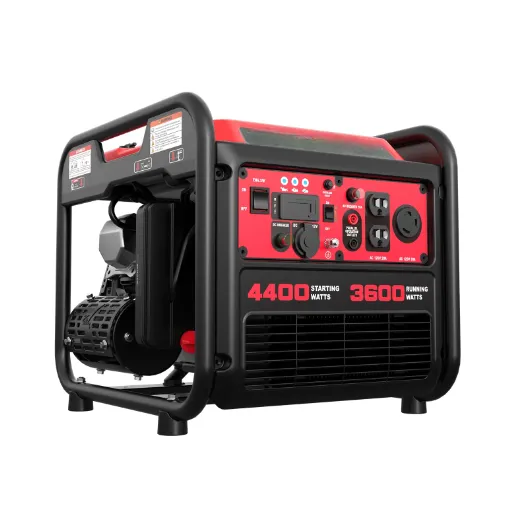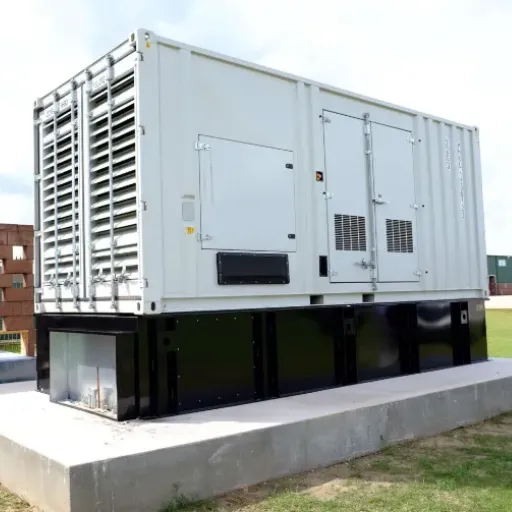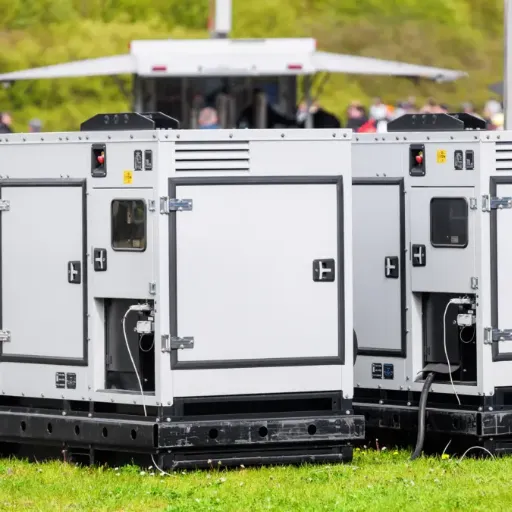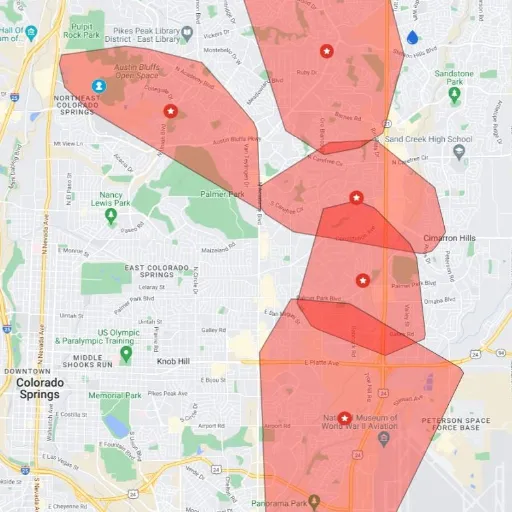Power outages can occur at any time, leaving homes, businesses, and entire areas in obscurity. For Nebraska residents, real-time information on these disruptions is vital not only for staying informed but also for staying safe. This Nebraska Power Outages Map Guide provides an overview of how outages occur and how to track them, as well as guidance on preparing for and responding to an outage when it happens. Before a blackout or in the middle of one when you can least afford it, you’ll have the tools and knowledge to keep yourself in control.
Understanding the Nebraska Power Outages Map
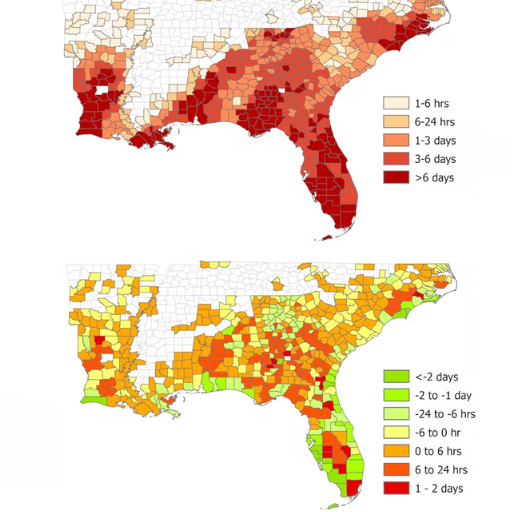
The Nebraska Power Outages Map provides live data on power outages throughout the state and is, therefore, a reliable tool. Users can view outage locations and their extent to stay informed during the emergency. Typically, the map displays information such as the number of customers affected, the affected areas, and the estimated time to restore power. Checking this map will help residents get a sense of the situation and plan accordingly. It is available on the web and is continually updated for time-based and accuracy reasons, serving as the nucleus in managing power interruptions effectively.
What is the Nebraska Power Outages Map?
Available online, it provides real-time outage information for power outages in Nebraska, including affected areas, the number of impacted customers, and estimated restoration times.
How to Access the Outage Map
How To Access the Nebraska Power Outages Map? Easy and Simple! Here are the steps on how to use this earnest tool:
- Access The Official Website
Access the Nebraska Power Outages Map official website using any web browser. Such sites can generally be found by searching for “Nebraska Power Outages Map” on Google, with the first site typically being the official one, issued by the Nebraska Public Power District or your local utility company.
- Utility-Wise Maps
Depending on your particular utility, you will find links to outage maps on their websites. For example:
- Nebraska Public Power District maintains a statewide map that is updated in real time for its entire service territory.
- Omaha Public Power District (OPPD) can provide you with an outage status for the Omaha metropolitan area and its adjoining counties.
- Lincoln Electric System (LES) keeps a wire map to update outages for the Lincoln metropolitan area.
- Launch the Map Tool
Once you become familiar with the site, look for a link or button labeled “Outage Map” or a similar phrase. Clicking on this link will take you to an interactive map that provides the most recent updates and offers great visuals.
- Select and View Information
Most outage maps allow you to filter results by location, zip code, or city. The map will highlight:
- Affected areas with a range of colors that often correspond to the percentage of customers affected.
- Number of customers affected.
- Current reports on restoration include the estimated time for restoration.
- Cause or status, if available.
- When available, mobile apps come into play!
Providers such as OPPD allow users to check outage status, report new issues, or receive alerts directly on their devices.
By knowing which resources to turn to, residents can stay informed about outages and restoration activities in their vicinity. Otherwise, the FAQ and customer service contact details should be listed on the site.
Interpreting the Information on the Map
Outage maps accompany a clear and accurate description of electricity interruptions in specific areas. Typically, these maps will show the affected areas, the number of customers interrupted, estimated restoration times, and the status of repair. To leverage the maps and available resources more fully, the following key features:
- Outage Affected Areas
The area undergoing an outage is highlighted on the map. Different colors or icons mark the outage areas in the map. In most of the maps, usually, the darker shade or larger icons indicate more severe or wider impacts.
- Number of Affected Customers
Many outage maps provide information on the total number of customers affected in a given area. In others, the figures shown might include “1,200+” to illustrate the scale of the problem with ease.
- Estimated Restoration Times
Providers attempt to provide an estimate of when power restoration can occur. Such times may be very frequently updated based on the availability of new information while repair work is in progress. Thus, an area may indicate an estimated restoration time of 3 hours, but this can be adjusted depending on further assessment and review.
- Outage Cause or Status
If known, outage maps are even updated with the cause of the outage. Typical causes of outages may include severe weather, equipment failure, or scheduled maintenance. Status updates on repair progress, such as “Under Investigation”, “Crew Dispatched”, etc., add a little more transparency.
- Real-Time Updates
When outage maps are cross-referenced using Google Search, the user may gain additional valuable context or verify specific incidents, such as the kind of query that probes whether a storm is causing widespread disruption in the area. Most searches will take you directly to official utility websites or news updates for greater reliability.
Real-time data supplemented by these visual maps enhances residents’ perspectives on the issue and allows them to plan accordingly. Regularly refreshing these resources and staying up-to-date with updates will indeed greatly aid in handling outages.
Importance of Real-Time Outage Updates

Real-time outage information is necessary for safety, to minimize inconvenience, and for proper planning. These updates help assess the extent of the outage quickly, prepare for inconveniences, and offer temporary solutions, such as receiving backup power or arranging temporary accommodations. Such information benefits from reliability and should come from credible sources, such as utility companies and local authorities. It is also helpful in preventing misinformation and enabling informed decision-making. Real-time updates help people to react promptly and appropriately to the changes.
Benefits of Tracking Power Outages
- Better Preparedness
If they track information about outages, residents and businesses can secure backup generators, charge essential electronic devices, and formulate stock plans for food and water supplies, among other preparations. The DOE report notes that individuals following the outage are 30% more prepared for long-term disruptions.
- Minimize Impact on Daily Life
Knowing about ongoing outages helps reduce disruptions to work, school, or household affairs. For instance, businesses could reschedule their operations or opt for planned downtime to mitigate financial losses and maximize productivity.
- Safety Measures
Safety is paramount during and immediately after outages, especially in extreme weather conditions. Accidents may be prevented from occurring due to improper use of lighting or heating, hazards like the disposal of food type, or carbon monoxide poisoning due to unorthodox generator usage.
- Clear Communication
To remain in communication with family members, neighbors, or coworkers, it is essential to know the status of a power outage. Cooperation in emergencies is crucial, and an outage tracker helps people stay connected and share accurate information about the restoration timeline.
- Vulnerable Groups’ Support
Reliably tracking outages is especially advantageous for vulnerable groups, such as the elderly or those with medical conditions, who rely on power equipment. Advanced warnings and timely updates provide caregivers with more time to react and marshal the necessary resources.
How to Receive Real-Time Updates
Real-time information during power outages is crucial for those seeking to stay informed and take appropriate action. Some productive ways to gain the latest information include:
- Enable Utilities Provider Alerts
Utility providers usually offer a notification service to alert their customers of outages, estimated restoration times, and updates. Sign up for such alerts, either in the form of texts or emails, through their official websites or mobile apps. For instance, PG&E or Con Edison can and will offer notifications specific to your service area.
- Use Google Search for Instant Details
Google Search provides an effective way to check outage updates in real-time. Typing relevant queries, such as “power outage near me” or “[Utility Company Name] outage map,” will refresh interactive maps and real-time data with restoration timelines. In earlier updates to its infrastructure, Google optimized searches and featured scattered location-specific information at the top of the results, often from utility companies and government agencies.
- Apps, Interactive Maps
Apps and tools like Nextdoor and WeatherBug enable reports from local communities and weather-related outages, whereas utility apps often maintain outage maps with greater detail. This allows you to monitor affected areas and predict when power will be restored.
- Social Media Updates
Local utility providers and emergency management agencies typically maintain official accounts. During outages, Twitter and Facebook serve as real-time information hubs, allowing users to engage with those seeking information through comments or direct messages. Search for posts using hashtags such as #poweroutage or location-specific tags to view relevant content.
- Local News Sources
Credible news organizations in the area broadcast urgent news alerts for large-scale outages. It pays to stay tuned to live TV, radio, or their online presence for ongoing coverage with essential details.
By applying these methods, you can be assured of receiving correct and timely information to ease the ordeal of power outages.
Understanding Outage Duration and Areas Affected
During power outages, what other things are worth knowing include the elapsed time and the areas affected? Various factors contribute to the time frame and area of the outage. Here are a few details to ponder:
- Cause of the Outage
The underlying reason of the outage affects the duration and scale. Such reasons include heavy weather, equipment failure, or planned maintenance.
- Extent of Damage
Suppose an outage is caused by physical damage to the power grid. In that case, whether it’s a downed power line or damage to a substation, it might take a while to repair, particularly if the damaged site is in a very remote location.
- Utility Response Time
The different power companies respond to outages at various speeds, depending on their availability of resources, the number of crews available, and the system of priority that they use to respond to outages.
- Population Density of the Area
Due to the number of people affected, bigger cities usually get faster attention than isolated rural regions.
- Access to Real-Time Updates
Through utility company websites, mobile applications, or customer service hotlines, customers can obtain the most up-to-date and accurate estimates of outage resolutions relevant to their current conditions.
Having these factors in mind and taken into consideration, both individuals and communities would surely be prepared in judging the approximate restoration times as well as the possibilities of delay in actual power recovery efforts.
Preparing for Power Outages in Nebraska

Being prepared for outage incidents in Nebraska requires careful planning and the availability of essential resources. Below are some of the crucial steps for preparedness:
- The Emergency Kit
Water, non-perishable foods, a flashlight, extra batteries, a first-aid kit, and any essential medication must be included.
- Stay Updated
Always listen to local news and weather forecasts, and sign up for outage notifications from your utility to receive updates on outages and restoration efforts as they occur.
- Have a Backup for Power
If usable, consider a backup generator to maintain power to critical home appliances in lengthy non-electric times.
- Make an Emergency Plan with Your Family/Relatives
Agree on specific communication arrangements with your household. Identify a few safe places to stay during an extreme weather event to help you find shelter. Make sure everyone understands the basic actions to take during an outage.
By doing so, the inconveniences brought by outages can be lessened; they will help further safeguard your comfort and life.
Essential Tips for Emergency Preparedness
- Stock Emergency Supplies
Keep an emergency kit on hand with basic supplies, including non-perishable food, bottled water (one gallon per person per day for three days), flashlights, extra batteries, a first-aid kit, and necessary medications. FEMA states that only 49% of Americans have an emergency kit ready, while every effort should be made to have one.
- Stay Updated
Watch the local news and weather updates on a trusted source, such as a NOAA Weather Radio or smartphone app. Almost 80% of Americans use mobiles for emergency alerts. Keep your gadgets charged and consider using power banks as a backup.
- Secure Your Home
Inspect your home for any weak points. Secure windows, doors, and roofs to withstand severe weather conditions. Typically, stormproofing costs around $3,000, which may be offset by avoiding repair costs later on.
- Create an Evacuation Plan
Draw up evacuation routes and list multiple safe places to go, such as shelters or the homes of family members. Ensure that all family members are aware of these routes. A research study concluded that more than 60% of Americans feel unprepared when asked if they feel prepared to evacuate during an emergency due to a lack of planning.
- Plan for Stuff with Special Needs or Pets
Include pets and family members with special medical or accessibility needs in your emergency plans. Less than half of pet owners have a plan in place for their animals during a crisis, which can complicate evacuation efforts. This should include items such as pet food, carriers, and any necessary medical equipment or supplies.
Creating a Power Outage Kit
Creating a power outage kit, I think about assembling essentials that ensure the safety and comfort of my family and me. My kit has flashlights, extra batteries, a portable phone charger, and a battery-powered radio in case updates are needed. Additionally, non-perishable food items, bottled water, a first-aid kit, and medications are packed. For those who need to stay longer, blankets, emergency cash, and other essentials for my household are added to the list, such as diapers or pet supplies. By keeping the kit neat and handy, I can ensure that we are prepared for any unexpected power outage.
Staying Informed During an Outage
Being well-informed is crucial during a power outage if the safety and well-being of all those living under the same roof are to be maintained. Start your preparations by tuning into emergency alerts on a local AM/FM station with a battery-operated or hand-crank radio. Experts say that weather radio from NOAA is among the best ways to stay informed about severe weather conditions and emergency broadcasts.
If the cellular networks can function, be sure to install and utilize these mobile apps: FEMA, Red Cross Emergency, and the local government alert services. These apps will send you essential push notifications and instructions on what to do in an emergency. Another option is to check out the Google Crisis Response tools from search results, which combine real-time updates on outages, road conditions, and shelters.
If one has access to the internet through Wi-Fi, mobile data, or both, it is advisable to regularly check trusted sites, such as local utility companies’ or government agencies’ websites, for outage maps and restoration schedules. In recent years, power utilities have often been able to restore power to approximately 85% of affected customers within 24 hours after a widespread outage; therefore, being well-informed about restoration timelines carries significant importance.
How Utility Companies Manage Power Restoration

To restore power, utility companies follow a methodical and predetermined restoration plan, both for safety and efficiency reasons. The priority is given to any damage affecting critical infrastructures, such as power plants and substations that supply power to large areas. Then, crews proceed to repair high-voltage transmission lines that transmit power across long distances. After these central lines are restored, attention is placed on the smaller distribution lines and transformers serving neighborhoods and individual homes. Meanwhile, they utilize high-tech monitoring systems to detect outages and dispatch restoration crews most strategically. Safety assessments are undertaken at every stage to ensure the safety of the workers and the public.
Steps Taken During Power Restoration
|
Step |
Description |
|---|---|
|
1. Assess Damage |
Identify hazards like downed power lines. |
|
2. Ensure Safety |
De-energize dangerous lines and clear hazards. |
|
3. Repair Transmission |
Restore high-voltage transmission lines. |
|
4. Fix Substations |
Repair substations to stabilize power flow. |
|
5. Restore Main Lines |
Repair main distribution lines serving large areas. |
|
6. Prioritize Critical |
Restore power to hospitals, police, and fire departments. |
|
7. Address Local Lines |
Repair local distribution lines and transformers. |
|
8. Restore Individual |
Fix service lines to individual homes and businesses. |
|
9. Mobilize Crews |
Deploy additional crews and mutual aid if needed. |
|
10. Communicate Updates |
Provide restoration updates to customers. |
How Utility Companies Communicate with the Public
In cases of power outages, our communication disseminates across various channels to ensure timely and accurate updates. Web-based resources, such as social media, company websites, and mobile apps, share maps of outages, along with restoration time estimates and safety tips. Additional alerts may be sent via email or text, and 24-hour customer support is available through a call center. We consider it a priority to keep customers informed at all times, while giving them proper attention should they have concerns.
Resources for Reporting Outages and Getting Help
In the instances of an amenity outage or other emergencies, quick access to the appropriate resources for reporting the issue and seeking assistance is crucial. Outlined below are five dependable means for reporting outages and seeking assistance:
- Online Outage Reporting Tool
The customer can report an outage directly on the website using the online outage report tool. Simply log in to your account, navigate to the outage section, enter your location, and provide the required information.
- Mobile Application
The mobile application is probably the most convenient way to report an outage and view outage maps. Install the mobile app on your smartphone to receive alerts and notifications in real-time.
- 24-Hour Customer Call Center
During an outage, customers are encouraged to call our facility-based customer center at all hours to report an outage or for general information inquiries. Our representatives are always ready to assist you.
- Text Message Alerts
Enroll in the outage text alert program. You can report outages by texting specific keywords to the designated number and receive updates on restoration.
- Social Media
Stay informed about our social media channels on Facebook, Twitter, and Instagram for the latest updates on outages. You can also message us directly to report an issue, and we will respond promptly.
References
-
IEEE Xplore: “Evaluating the impact of power outages on occupancy patterns during the 2021 Texas power crisis”
Link to source -
IEEE Xplore: “Quantifying the power system resilience of the US power grid through weather and power outage data mapping”
Link to source -
IOP Science: “Shedding light on inequities of power outages through data transparency”
Link to source
Frequently Asked Questions (FAQ)
How can I report an outage in Nebraska?
To report an outage in Nebraska, you can visit the OPPD outage center on their website. There, you’ll find options to report an outage and view the current outage map, which provides a general view of where power outages are located within OPPD’s service territory.
What should I do to prepare for a storm that may cause electricity outages?
To prepare for a storm that could disrupt electricity, ensure you have a supply of water, non-perishable food, flashlights, and batteries. It’s also wise to charge your electronic devices and have a battery-operated radio on hand to stay updated on the situation from your local outage center.
What is the typical time frame to restore power during large outages?
During significant outages, restoration efforts may take anywhere from a few hours to 24 hours, depending on the extent of the damage and the current outage conditions. Field crews work diligently to restore power as quickly as possible.
How can I contact OPPD for customer service regarding outages?
You can contact OPPD’s customer service through their official website or by calling their helpline. They can provide updates on outages, assist with reporting issues, and offer guidance on how to stay safe.
Where can I find the current outages map for Nebraska?
The current outages map for Nebraska is available on the OPPD website. This interactive map enables you to view outages by selecting the area of interest, displaying shaded rectangles that represent areas affected by power outages.
What do the shaded rectangles on the Nebraska power outages map indicate?
The shaded rectangles on the Nebraska power outages map indicate areas that are approximately 2.5 miles by 3.5 miles, where power outages are located within OPPD’s service territory. This helps customers affected within that area to understand the scope of the outage situation.
Can I use an app to check for power outages in Nebraska?
Yes, OPPD offers an app that allows customers to check for current outages, report an outage, and receive updates on restoration efforts. This app can be a convenient way to stay informed during outages.
What should I do if I see a downed power line?
If you see a down power line, it’s crucial to stay away and call 911 immediately. Downed power lines can be deadly and pose serious hazards. Always assume that any down line is live and dangerous.
How does OPPD handle restoration after a storm?
After a storm, OPPD prioritizes restoration efforts based on the severity of the outages and the number of customers affected. Field crews assess the damage, make repairs to transformers and poles, and work efficiently to restore electricity to all customers.
What information does the Nebraska power outages page provide?
The Nebraska power outages page provides valuable information regarding current outages, restoration updates, safety tips, and ways to report an outage. It serves as a comprehensive resource for residents to stay informed during outages and emergencies.



